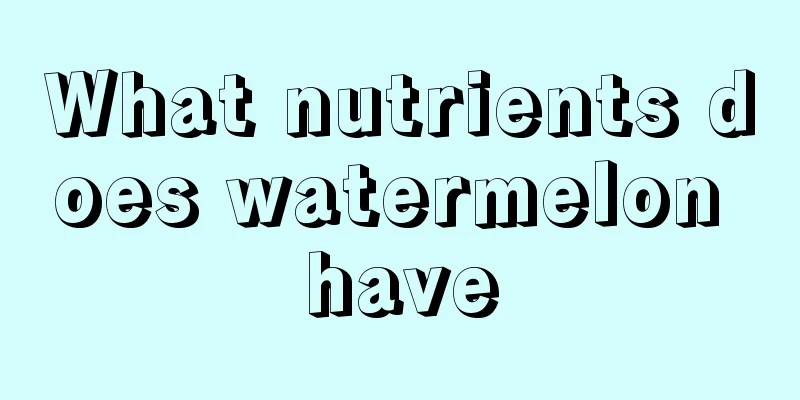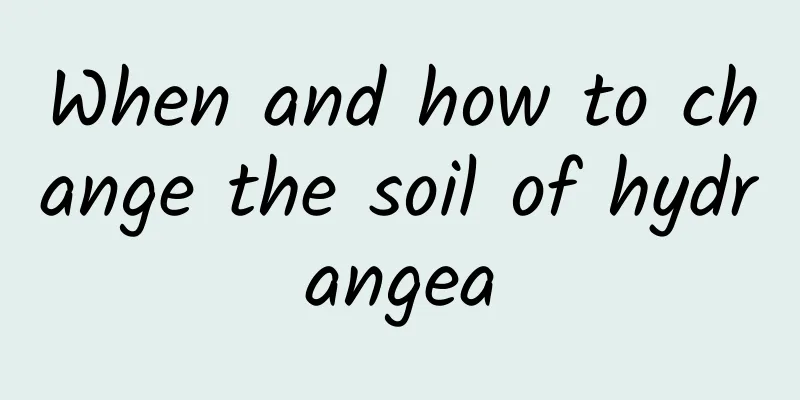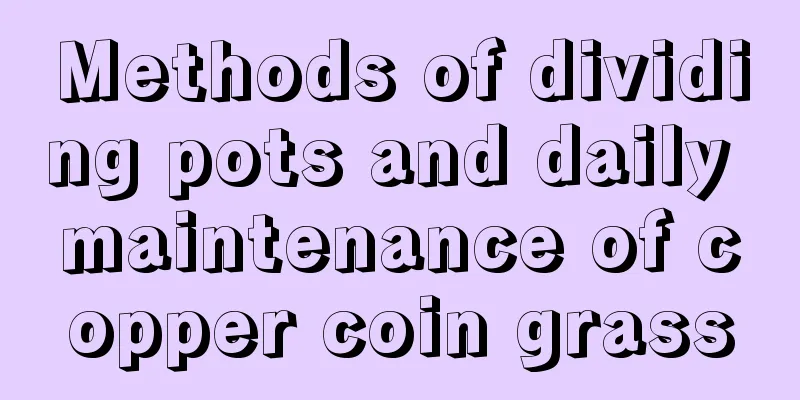How to make sweet potatoes grow better (how to grow sweet potatoes and make them more productive)

|
Sweet potatoes with poor appearance may not be unsaleable, but it will be difficult to sell them at a good price. Moreover, the yield of sweet potatoes with poor appearance will usually not be high. I have a friend in Zhanjiang. He and his father planted hundreds of acres of sweet potatoes at home. In 2019, he found that the quality of his sweet potatoes was not as good as in previous years. What puzzled him was that he used more and more fertilizers, and also used various regulators and foliar fertilizers, but the sweet potatoes became particularly bad. The shape of the potatoes was too long and curved, the skin was uneven, and the yield was not as good as before! Later, it was determined that there were problems with his planting method and fertilizer. His over-planting caused soil compaction and acidification, and bacterial imbalance. In addition, his plots were particularly serious with root-knot nematodes, which was also the reason for his poor tuber shape and low yield. The method he used was not complicated. Since it was bacterial imbalance, biological fertilizer was appropriately added to the base fertilizer during planting. The amount used was not much. In addition to the base fertilizer, 20-40 kg of biological fertilizer was added to one acre of land. 15 days after transplanting, he bought some products to promote root growth for drip irrigation. Because it is not enough to use the bacterial fertilizer only once, because we will use fungicides to prevent diseases during the growth of sweet potatoes. These fungicides do not distinguish between friend and foe, and kill the beneficial bacteria while killing harmful bacteria. Therefore, we need to apply some biological agents 35 days after transplanting. They are available on the market, and the quality is slightly better. Generally, an 800 ml bottle sold on the market can drip irrigate about 5 mu of land. The cost is not very high for sweet potato farmers. It is best to use it again 55 days after transplanting. When the fruit expands, it is best to spray foliar fertilizer containing calcium and magnesium or 10-10-35+TE foliar fertilizer, which is also beneficial for fruit expansion and increasing taste. In addition, if what we grow is not green and pollution-free, we can also use some choline chloride during the swelling period to make the fruit swelling better. However, the use of choline chloride will leave residues, so you will definitely not be able to apply for the "China Green Pollution-Free Planting Base" certification, and it will not be possible to export. Families should be aware of this. After two years of continuous conditioning, his yield per mu has increased by more than 500 kilograms, an increase of about 15%. The quality has also improved, with a good taste, bright skin color, and good shape of sweet potato strips. This year, there are even more sweet potato strips. Originally, there were 5-6 strips per sweet potato plant, but now there are 8-10 strips. It is expected that the yield can increase by more than 30%. When fertilizing sweet potatoes, we must pay attention that we cannot only apply nitrogen fertilizer to sweet potatoes. Because sweet potatoes are potassium-loving crops, if we apply too much nitrogen fertilizer, they will only grow seedlings. If they grow too fast, we have to use paclobutrazol to control their growth, which is troublesome. In addition, sweet potatoes cannot be fertilized in a concentrated manner, because each fertilizer has a limited effective period, and the growth cycle of sweet potatoes is long. Concentrated fertilization will lead to fertilizer deficiency in the later stage. 20 days after planting the seedlings, if it is a small plot, it is not recommended to use it for large-scale planting. For small plots, we can use diluted human feces or urine or an appropriate amount of urea to raise seedlings. When the underground tubers expand, you can sprinkle wood ash to supplement potassium. If the fertilizer is insufficient in the later stage, you can spray 0.3% potassium dihydrogen phosphate 2 to 3 times to prevent premature aging of the plants. However, wood ash is not easy to get now. If you want to have a high yield of sweet potatoes, using fertilizer is only one aspect, the method of transplanting and picking is also crucial!In order to have a high yield of sweet potatoes without worm holes and few cracks, we need to control underground pests and choose suitable plots for planting. It is best to choose a plot with fertile soil, loose soil and good ventilation. Of course, good irrigation and drainage conditions are also essential. Sweet potatoes grown in loose soil are much smoother and less likely to crack. Sweet potatoes have more water and less fiber, so they taste better. In addition, when transplanting and planting, it is best to choose sweet potato vines that are about 20-30CM long. Do not dig trenches randomly, but dig 10CM deep and shallow trenches along the ridges. Then put the seedlings in, expose the tops of the sweet potato seedlings outside and cover them with soil, which is what many people call covering the leaves with soil. This is conducive to fertilizer and water management, rooting and seedling slowing, improving survival rate and increasing yield. When using this method, keep the following points in mind: 1. Why do we need to cover the leaves with soil?We know that the sweet potato vines we transplanted have no root system. The plot is large and we cannot water it all the time, so the root system grows very slowly. Especially 2-3 days after transplanting is the critical stage for root growth. We bury the leaves in the soil, leaving only the tips of the seedlings outside. This helps keep the moisture of the sweet potato seedlings from evaporating as the leaves are exposed, and also prevents the occurrence of uneven seedlings, missing seedlings, and broken ridges due to dehydration. 2. What are the benefits of this transplanting method?This flat planting method has the added benefit of retaining moisture, as most of the potato seedlings are buried beneath the soil. This will encourage every node of the sweet potato vine to take root and produce potatoes, reducing the phenomenon of empty nodes without potatoes. The more potatoes there are, the higher the yield will be . And because the plot we chose is relatively loose, the sweet potatoes produced are smooth and uniform. 3. What should I pay attention to?However, farmers should be careful. This flat planting method is also very dangerous if high temperatures continue. No matter what crop is transplanted, lack of water will cause the crop to die, because the seedlings have poor drought resistance after transplanting. At this time, we need to water and add fertilizer according to the situation. Why do we need to add fertilizer? Because we use this flat planting method, each node will produce potatoes, and the amount of potatoes will increase. If the fertilizer is not enough at this time, it will lead to insufficient nutrition, the potatoes will naturally not grow big, and the poor quality will affect the yield and market. Finally, let’s talk about how to prevent and control underground pests! Sweet potatoes are prone to attracting underground pests such as mole crickets, grubs, root nematodes, wireworms, etc. I have already talked about the prevention of grubs in an article, but there is too much content to repeat it here. 1. Do not use uncomposted farmyard manureUncomposted farm manure contains a large number of insect eggs and grass seeds, and it releases heat during the composting process, which can cause root burns. 2. Spread "poisonous soil" before transplantingUnderground pests must be prevented in advance. We cannot wait until we transplant them before using the medicine, otherwise the effect will be poor. In fact, this method has residual and high toxicity, but there is no better way at present. We can use phoxim to mix soil to control underground pests such as mole crickets, grubs, wireworms, cutworms, and borers. However, family members should pay attention that phoxim is not systemic, that is, pests will not die unless they pass by it or eat it. Therefore, we must spread the poison bait evenly. It is recommended that farmers can use 2 kg of 5% phoxim granules and mix it with 30 kg of fine soil to make poisoned soil, then spread it evenly on the surface and then plow the ground. 3. TrappingThis is for small plots. It is not recommended for large fields. It is expensive and slow to take effect. It is better to buy some insecticides for a few dollars. However, some families do not want to use pesticides. We can use sweet and vinegar solution to lure and kill. We can mix sugar, wine, vinegar and water in a ratio of 6:1:3:10 and then add an appropriate amount of dichlorodiphenyltrichloroethane, and place it in different places in the field to lure and kill underground pests such as beetles, cutworms, and white grubs. 4. Use wood ash extract to irrigate the rootsThis method is less used nowadays as burning straw is prohibited and it is difficult to get large amounts of wood ash. However, farmers who grow crops on a small scale can still give it a try. The benefit of wood ash is that it can not only supplement potassium but also inhibit underground pests by virtue of its alkaline properties. It is recommended that farmers use wood ash extract to irrigate the roots of sweet potatoes during the expansion period to inhibit pests and promote fruit expansion. Potassium can not only increase the taste, but also speed up the transmission of nutrients, and promote the synthesis of carbohydrates and proteins, making the fruit expand faster. |
Recommend
Purple Rice Bean Planting Time and Method
Purple rice bean planting time Purple rice beans ...
How to plant aster seeds
If you want to collect aster seeds, they are usua...
How much is a pound of Pseudostellaria heterophylla seeds
1. How much is one pound The price of Pseudostell...
The role of calla lily
The efficacy of calla lily Not only is the juice ...
Mimosa planting methods and precautions Mimosa cultivation tips (simple method)
How to plant mimosa Soil selection To cultivate M...
How to water succulents
Once lacking water, the leaves of succulents will...
Grow Amaryllis in winter, use these 3 methods to propagate it, and your house will be filled with red flowers!
1. Cutting method Many times when we propagate pl...
Can green radish be placed in a fish tank as aquatic plants? How to fix it in the fish tank?
1. Can it be grown as aquatic plants? The vitalit...
When is the best time to plant lucky clover
Suitable time for sowing clover Clover is a plant...
Bletilla striata sowing time
Bletilla striata, as a traditional Chinese medici...
The correct way to water cyclamen, what to do if you water too much
1. The correct way to water 1. Watering during th...
The difference between Acorus calamus and Acorus calamus
1. The difference between leaves The leaves of Ac...
Diseases and Pests of Cycas and Their Control
Diseases and Pests of Cycas and Their Control Spo...
How to grow a fortune tree in winter
1. Suitable flower pots In winter, the amount of ...
Universal rooting method for Amaryllis
1. Soil culture method The most common way to cul...









